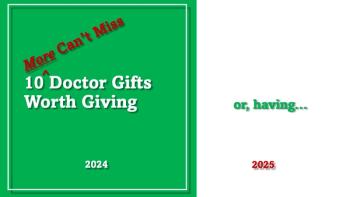
Sacramento: Where California's Medical History Began
Our travel writers find California's state capitol is more than just the home of the Gold Rush -- it's rich in its own medical history, as well.
Photography by the authors.
Arnold Schwarzenegger promised when he got to California’s capital: “I will pump up Sacramento.” Well, he tried. He didn’t understand that dysfunctional government was the norm in this small town at the end of the Sacramento River.
Take tour of the state's capitol and you'll eventually walk past the portrait of Jerry Brown. Brown, who was governor of the state from 1975 to 1983 -- and seemingly wants to have a go at it again in November 2010.
The governor of California gets to choose the artist for the official portrait that ultimately hangs in the
The capitol building stands in a beautiful park that also has a memorial to those who served in the Vietnam War. A circular wall holds the names of the 5,822 dead and missing of the one third of a million Californians who served. The wall surrounds bronze life-size statues showing scenes from the war, including a 19-year-old soldier wearily reading a letter from home. The memorial is the first to recognize the contributions of the 15,000 nurses who served in Vietnam and movingly depicts a nurse caring for a severely wounded soldier.
California’s history goes farther back, of course, but to the world it started with that electrifying event on the south fork of the American River on January 24, 1848. “My eye was caught by something shining in the bottom of the ditch,” wrote James Marshall, who was building a sawmill there for
Sutter’s Fort, then an agricultural settlement and now a state park, is the oldest restored fort in the U.S. It is a sad reminder of the fortunes of both men. Marshall and Sutter suffered financial misfortune before they ever met; neither benefitted from the Gold Rush and both died in wretched circumstances.
The
The Sierra Sacramento Valley Medical Society arranged the medical presentations at the Discovery Museum, but the society’s own
The exhibits ranged from “snake oil” advertisements and examples of blood-letting instruments, to the first X-Ray tube brought to Sacramento in 1897 and an iron lung used for children in the dreadful days of the polio epidemics in the 1950s.
Sacramento has had more than its share of epidemics. Perhaps being in the flood plain of the Sacramento River Delta increased the risk of pollution, but the cholera epidemic of 1850 was particularly tragic as the old city cemetery attests.
Seventeen physicians chose to stay with their sick patients, as most of the residents evacuated the city. Those physicians also succumbed to the disease; one is buried here but a plaque names all 17. There are actually 55 physicians buried in the cemetery and their head stones are certainly moving. The medical society has published a walking tour booklet on those medical pioneer gravesites.
A more cheerful walk would bring art lovers to the
Additional fun for visitors would be a casual saunter through Old Sacramento and along the river front. There you'll find the
The Andersons, who live in San Diego, are the resident travel & cruise columnists for Physician's Money Digest. Nancy is a former nursing educator, Eric a retired MD. The one-time president of the
Newsletter
Stay informed and empowered with Medical Economics enewsletter, delivering expert insights, financial strategies, practice management tips and technology trends — tailored for today’s physicians.








